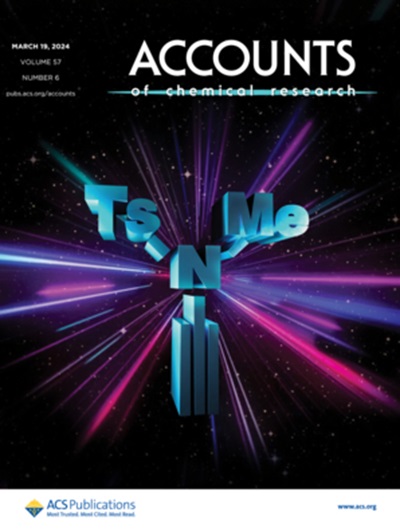金属-有机层的合成后修饰。
摘要
金属有机层(MOLs)作为二维(2D)金属有机框架(mfs)的一个子类,通过将mfs的结构通用性与二维材料独特的物理和化学性质相结合,在材料科学中获得了突出的地位。MOLs由有机配体连接的金属氧化物团簇组成,形成具有可调性质和大表面积的周期性扩展的二维结构。这些特性使得MOLs在催化、传感、储能和生物医学等方面具有巨大的应用潜力。mof的合成主要有两个关键途径:自上而下的大块层状mof剥离和自下而上的分子构建单元组装。剥落法允许从体前驱体中分离超薄MOL薄片,但可扩展性和结构缺陷是目前的挑战。相比之下,自下而上的组装可以更精确地控制结构设计,从而形成具有定制化学功能和形态的MOLs。通过精心选择连接体和合成条件,研究人员成功构建了具有多种几何构型的MOLs,包括线性、三角形和矩形配体基序。然而,实现一致的单层形成和控制横向尺寸仍然是这些材料广泛应用的关键挑战。MOLs的一个决定性优势是它们对合成后修饰(PSM)的特殊适应性。PSM策略可以在不影响底层框架完整性的情况下对MOL属性进行微调和引入新功能。已经建立了四种主要的PSM方法:(1)连接子修饰,其中额外的配位位点促进选择性金属化或官能团的结合;(2)二次构建单元(SBU)修饰,利用垂直于MOL平面的可替换位点进行目标功能化;(3)双重修改,集成连接器和SBU功能化,实现复杂多功能平台;(4)多层组装,将MOLs整合到更大的层次结构中,如仿生系统和复合材料。这些多功能修饰策略开启了MOLs的新应用,包括单位点催化、光催化和人工光合系统。例如,与传统mof相比,用过渡金属配合物功能化的mof具有更容易接近的反应位点,可以更快地传输衬底。此外,MOLs与仿生系统(如脂质体和蛋白质)的界面在光化学能量转换和选择性氧化过程中显示出巨大的前景。尽管取得了这些进展,但仍存在一些关键障碍。实现均匀的单层厚度,同时防止多层聚集仍然是一项艰巨的任务,需要更深入地了解控制MOL生长的热力学和动力学因素。此外,MOLs在干燥、吸附和结构修饰过程中的行为往往偏离经典模型,表明其涉及复杂的界面现象,值得进一步研究。解决这些挑战对于充分利用MOLs在下一代功能材料中的潜力至关重要。总之,MOLs代表了一种多功能和动态的材料类别,为不同科学学科的创新提供了机会。通过推进合成方法和加深我们对合成后修饰策略的理解,研究人员可以继续扩展MOLs的功能景观,为催化、能量转换等领域的变革性应用铺平道路。ConspectusMetal-organic layers (MOLs), as a subclass of two-dimensional (2D) metal-organic frameworks (MOFs), have gained prominence in materials science by combining the structural versatility of MOFs with the unique physical and chemical properties of 2D materials. MOLs consist of metal oxide clusters connected by organic ligands, forming periodically extended 2D architectures with tunable properties and large surface areas. These characteristics endow MOLs with significant potential for applications in catalysis, sensing, energy storage, and biomedicine.The synthesis of MOLs predominantly follows two key pathways: top-down exfoliation of bulk layered MOFs and bottom-up assembly from molecular building units. The exfoliation method allows for the isolation of ultrathin MOL sheets from bulk precursors, but scalability and structural defects present ongoing challenges. In contrast, the bottom-up assembly offers more precise control over structural design, enabling the formation of MOLs with tailored chemical functionalities and morphologies. By carefully selecting linkers and synthetic conditions, researchers have successfully constructed MOLs with diverse geometric configurations including linear, triangular, and rectangular ligand motifs. Nevertheless, achieving consistent monolayer formation and controlling lateral dimensions remain critical challenges for the widespread application of these materials.A defining advantage of MOLs is their exceptional amenability to postsynthetic modification (PSM). PSM strategies enable fine-tuning of MOL properties and the introduction of novel functionalities without compromising the integrity of the underlying framework. Four principal approaches to PSM have been established: (1) linker modification, where additional coordination sites facilitate selective metalation or functional group incorporation; (2) secondary building unit (SBU) modification, using replaceable sites perpendicular to the MOL plane for targeted functionalization; (3) dual modification, integrating linker and SBU functionalization to achieve complex multifunctional platforms; and (4) multilevel assembly, incorporating MOLs into larger hierarchical architectures such as biomimetic systems and composite materials.These versatile modification strategies have unlocked novel applications of MOLs, including single-site catalysis, photocatalysis, and artificial photosynthetic systems. For instance, MOLs functionalized with transition metal complexes have more accessible reactive sites than conventional MOFs for faster substrate transport. Additionally, MOLs interfaced with biomimetic systems, such as liposomes and proteins, have demonstrated significant promise in photochemical energy conversion and selective oxidation processes.Despite these advancements, several key obstacles persist. Achieving uniform monolayer thickness while preventing multilayer aggregation remains a formidable task, necessitating deeper insights into the thermodynamic and kinetic factors governing MOL growth. Furthermore, the behavior of MOLs during drying, adsorption, and structural modification often deviates from classical models, suggesting the involvement of complex interfacial phenomena that warrant further investigation. Addressing these challenges will be crucial for harnessing the full potential of MOLs in next-generation functional materials.In summary, MOLs represent a versatile and dynamic class of materials that offer opportunities for innovation across diverse scientific disciplines. By advancing synthetic methodologies and deepening our understanding of postsynthetic modification strategies, researchers can continue to expand the functional landscape of MOLs, paving the way for transformative applications in catalysis, energy conversion, and beyond.

 求助内容:
求助内容: 应助结果提醒方式:
应助结果提醒方式:


